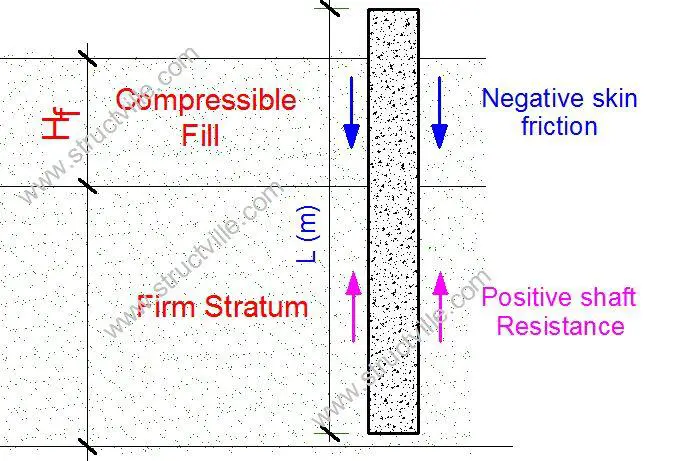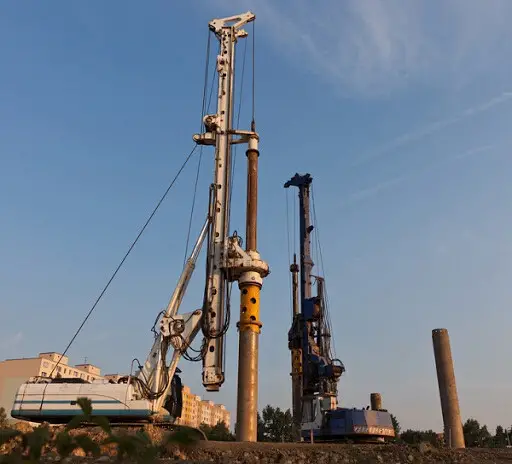Negative skin friction is a downward drag force exerted on a pile by the soil surrounding it. This is the reverse of the normal skin friction or shaft resistance needed to support piles. If the downward drag force is excessive, it can cause the failure of the pile foundation.
Where applicable, negative skin friction must be allowed when considering the factor of safety on the ultimate load-carrying capacity of a pile. The factor of safety (FOS) where negative skin friction is likely to occur is given by;
FOS = Ultimate load carrying capacity of pile/(Working load + Negative skin friction load)
Negative skin friction may occur in pile foundations due to the following circumstances;
- If a fill of clay soil is placed over a granular soil or completely consolidated soil into which a pile is driven, the consolidation process of the recently placed fill will exert a downward drag of the pile during the process of consolidation.
- If a granular fill material is placed over a layer of compressible clay, it will induce the process of consolidation in the clay layer and exert a downward drag on the pile.
- Lowering of the water table will increase the vertical effective stress on the soil at any depth which will induce consolidation settlement of the clay. If a pile is located in the clay layer, it will be subjected to a downward drag force.

According to section 7.3.2.2 of EN 1997-1:2004 (Eurocode 7), if ultimate limit state design calculations are carried out with the downdrag load as an action, its value shall be the maximum, which could be generated by the downward movement of the ground relative to the pile.
Furthermore, the calculation of maximum downdrag loads should take account of the shear resistance at the interface between the soil and the pile shaft and downward movement of the ground due to self-weight compression and any surface load around the pile. An upper bound to the downdrag load on a group of piles may be calculated from the weight of the surcharge causing the movement and taking into account any changes in groundwater pressure due to ground-water lowering, consolidation or pile driving.
Computation of negative skin friction on a single pile
The magnitude of negative skin friction (Fn) for a single pile in filled up soil may be taken as;
(a) Cohesionless soil
Fn = 0.5K’γf‘Hf2tanδ’
Where;
K’ = coefficient of earth pressure = Ko = 1 – sinφ’
γf‘ = Effective unit weight of material causing down drag
Hf = Depth of compressible layer causing down drag
δ’ = soil-pile angle of friction ≈ 0.5φ’ – 0.6φ’
(b) Cohesive soil
Fn = PHfS
Where;
P = Perimeter of pile
S = Shear strength of soil
Negative skin friction on pile groups
When a group of piles passes through a compressible fill, the negative skin friction may be obtained using any of the following methods;
(a) Fng = nFn
(b) Fng = sHfPg + γf‘HfAg
Where;
n = number of piles in the group
γf‘ = Effective unit weight of material causing down drag
Pg = Perimeter of the pile group
Ag = Cross-sectional area of the pile group within the perimeter Pg
S = Shear strength of the soil along the perimeter of the group










